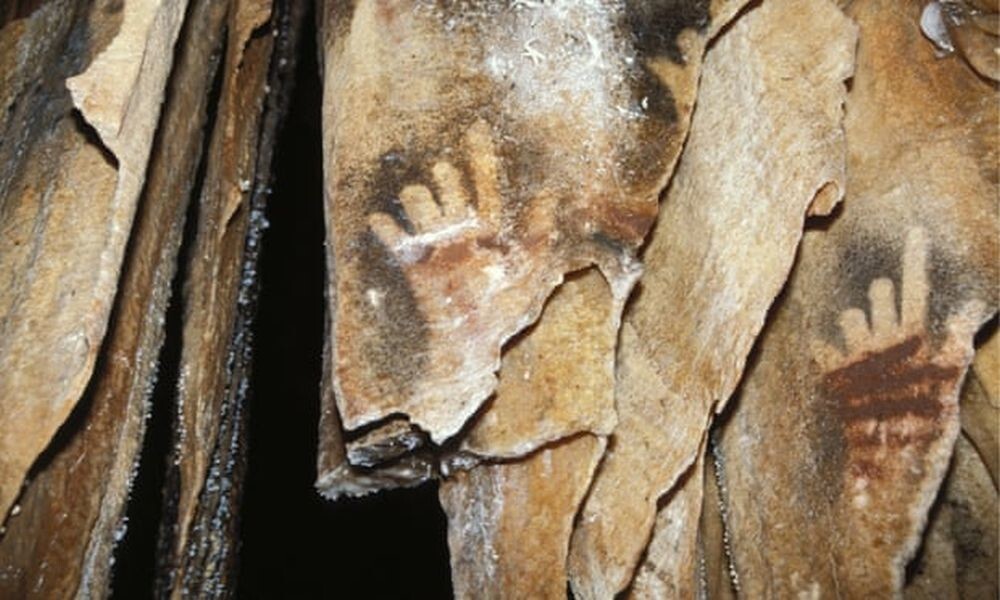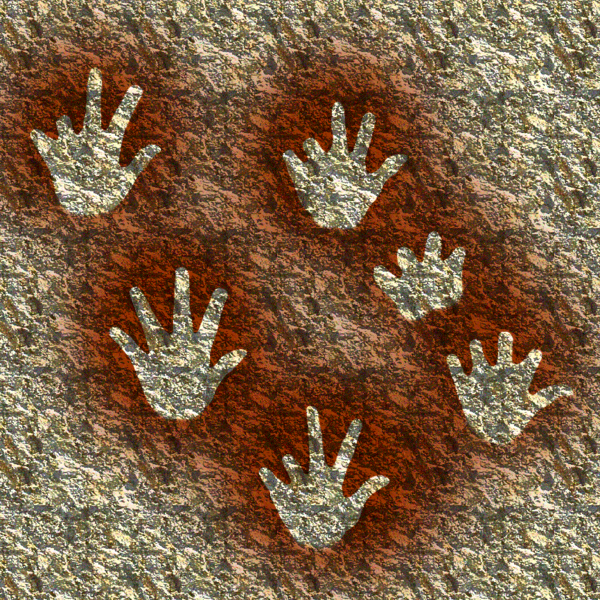Why are many rock “palms” from the Stone Age missing the phalanges of the fingers (4 photos)
Many images of palms left by Stone Age people on cave walls are missing a phalange or several phalanges of the fingers. What if it's not a coincidence? 
According to Canadian scientists, part of the finger may have been removed as part of a ritual intended to appease a deity or promote social cohesion.
In prehistoric times, men and women may have had their fingers deliberately chopped off during religious rituals, according to researchers of Paleolithic cave paintings.
The work, presented at a recent meeting of the European Society for Human Evolution, examined 25,000-year-old paintings from caves in France and Spain that depict hand stencils. In more than 200 of these hand drawings, at least one phalanx of the finger is missing. In some cases, the upper phalanx of only one finger is missing, in others the phalanges of several fingers are missing. 
Stencils of hands with missing phalanges, Cosquet Cave (France)
In the past, the absence of fingers was explained by the artistic preferences of the creators of cave paintings or by the real medical problems of ancient people, including frostbite.
But the authors of a new study, led by archaeologist Professor Mark Collard from Simon Fraser University in Vancouver, say the truth may be much more dire.
“There is compelling evidence that these people may have deliberately amputated their fingers as part of rituals designed to evoke the help of supernatural entities,” Collard says.
According to him, this tradition was not limited to just one time or place: "Quite a lot of societies encourage cutting off fingers today and have done so throughout history." 
Stencil of a hand from Cosquet Cave (France)
Collard cited the example of the Dani people from the New Guinea highlands. There, women sometimes have one or more fingers cut off after the death of loved ones, including sons or daughters.
“We believe that Europeans did the same thing in Paleolithic times, although the specific belief systems may have been different. We believe that this practice was not necessarily common, but occurred at different periods in history,” the scientist says.
Collard and his colleagues first published the finger amputation thesis several years ago, but were criticized by other scientists who argued that finger amputation would be catastrophic for humans. Men and women without fully functioning hands would not have been able to cope with the harsh conditions that existed thousands of years ago.
Since then, Collard and graduate student Brea McCauley have collected more data to support the amputation thesis. In a paper presented at the European Society conference, they said their latest research provides even stronger evidence that the removal of fingers to appease deities explains hand paintings in caves in France and Spain. 
Hand stencils from Gargas Cave (France)
Rock art of hands are divided into two types: impressions and stencils. In the first case, a person placed his hand in pigment and pressed it against a wall, creating a handprint. Stencils were created by placing a hand on a wall and then applying pigment to it to create a silhouette. In both cases, hands with missing phalanges were found among wall paintings in four main locations: the Maltravieso and Fuente del Trucho caves in Spain, and the Gargas and Cosque caves in France. The Cosque caves, located near Marseille, were discovered as recently as 1985 by diver Henri Cosque.
Mark Collard and Brea McCauley looked for evidence of finger amputation in other societies and found more than 100 similar cases.
“This practice was clearly invented independently several times,” they argue. “And it was used by some hunter-gatherer societies.”
These examples are not limited to Europe, they say. Four sites in Africa, three in Australia, nine in North America, five in South Asia and one in Southeast Asia contain evidence of finger amputation.
“This form of self-harm has been practiced by populations on every inhabited continent,” Collard says. “Moreover, it is still used today, as can be seen in such nationalities as the Dani.”
Collard pointed to rituals that are stillp are carried out in Mauritius and elsewhere, such as walking on fire, piercing the face with skewers and threading hooks through the skin so that a person can drag heavy chains behind him.
“After going through such rituals, people become more willing to cooperate with other group members. Finger amputation could simply be a more extreme version of such a ritual."





























